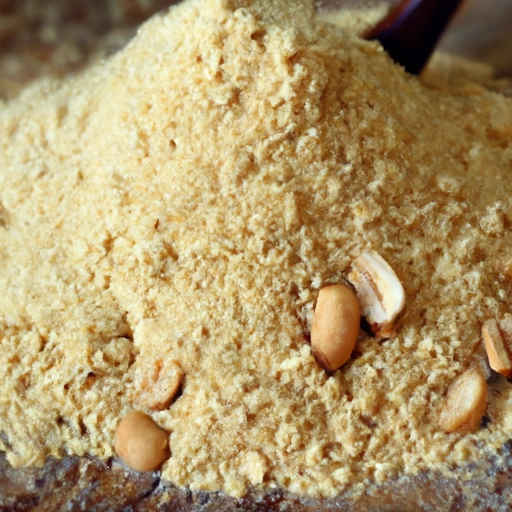Peanut Powder
Description

Peanut powder, also known as peanut flour, is a finely ground product made from roasted peanuts from which much of the oil content has been removed. This process results in a light powder that is versatile in culinary applications and offers a rich source of protein and other nutrients with fewer calories and less fat than whole peanuts. Peanut powder can be easily integrated into recipes using either metric (grams, liters) or customary American units (cups, tablespoons, ounces).
Common uses
Peanut powder is frequently used to enhance flavor, boost protein content, or act as a thickener in various dishes. It is a common ingredient in energy bars, smoothies, and baking recipes.
Nutritional value
Calories
Typically, two tablespoons (approximately 12 grams) of peanut powder contain about 50 calories.
Protein
Peanut powder is rich in protein, with roughly 4 to 6 grams per 2-tablespoon (12-gram) serving.
Fat
Due to the oil extraction process, peanut powder contains 1 to 2 grams of fat per serving, significantly less than whole peanuts.
Carbohydrates
Each serving contains about 2 to 4 grams of carbohydrates, varying by brand.
Vitamins
Peanut powder is a good source of B vitamins, particularly niacin and folate.
Minerals
It is also high in essential minerals such as magnesium, phosphorus, and potassium.
Health benefits
Peanut powder can support muscle growth and repair due to its high protein content. Its low fat content can also be beneficial for weight management. Additionally, the fiber in peanut powder can aid in digestive health.
Potential risks
While peanut powder is generally safe for consumption, it may pose a risk for individuals with peanut allergies. Overconsumption can also lead to excessive calorie intake and gastrointestinal discomfort.
Common recipes
Peanut powder is used in smoothies, protein bars, baked goods such as bread, cookies, and pancakes, as well as savory dishes like sauces and marinades.
Cooking methods
It can be reconstituted with water for a peanut butter-like spread, or incorporated directly into dry ingredients. When baking, it is often mixed with other flours to improve texture and nutrition.
Pairing with other ingredients
Peanut powder pairs well with chocolate, bananas, and honey in sweet dishes and complements savory flavors such as soy sauce, ginger, and garlic in Asian cuisine.
Summary
Peanut powder is a nutritious and protein-packed ingredient suitable for an array of culinary uses. With its ability to enhance flavors without adding excessive fats, it is an excellent choice for health-conscious cooks and those looking to experiment with new textures and tastes in their cooking.